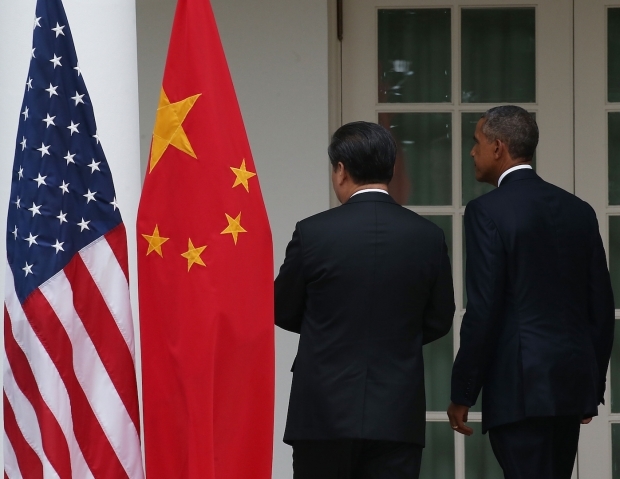President Xi Jinping has begun his first state visit to the United States to meet U.S. President Barack Obama in what state councilor and former foreign minister Yang Jiechi has called “a pivotal meeting at a critical time.”
Xi arrived in the United States amid tensions between Beijing and Washington over cybersecurity and South China Sea disputes. The meeting between the leaders of the two most important trading partners in the world comes as market volatility in China spills into global markets and reforms to the yuan exchange rate send ripples around the world.
The U.S. Federal Reserve’s recent decision to leave benchmark interest rates unchanged will also have a lasting impact on the world economy. And an upcoming U.S. election could also provide more tests for bilateral ties.
It is unrealistic to hope for a quick fix to many of these thorny issues, but both countries can certainly take the opportunity to speed up talks on a Bilateral Investment Treaty (BIT) to strengthen trade ties. As the world’s top two economies, China and the United States are obliged to help stabilize the world economy by improving trade ties, a cornerstone of bilateral relations.
Trade between the countries has come a long way over the past three decades, growing from nearly zero 30 years ago to U.S.$590 billion in 2014. U.S. data shows that Chinese investment has reached four-fifths of congressional districts in 45 states. This investment has created 85,000 new jobs in industries such as food processing, real estate, and energy.
To address lingering trade friction, Beijing and Washington have been negotiating the BIT for seven years. An agreement would be no less significant to bilateral trade and the global economy than when China joined the World Trade Organization in 2001.
During the 19th round of BIT talks in June, the two countries began work on a negative list for each country, a key plank in the BIT that details sectors and projects where investment from the other country is prohibited or restricted.
The BIT will also be an important topic on Xi’s state visit, and negotiators on both sides are keen to produce a positive outcome, China’s Ministry of Commerce says.
Over 90 business leaders from the United States recently wrote letters to both presidents appealing for a breakthrough in negotiations.
However, BIT talks have proceeded at a snail’s pace over the past several years. The United States has blamed China for the lack of progress, arguing it has not done enough to open its markets. China says it will not sign the treaty unless Washington makes a substantial commitment to easing restrictions on Chinese investment in the United States and on exports of high-tech products to China.
Unofficially, opposition to the BIT can be heard on both sides of Pacific Ocean. Some businesspeople in the United States express dismay about the accord because they believe that it will further skew bilateral trade in favor of China, come at the expense of job creation, and harm long-term national interests. In China, detractors dismiss the BIT as another American conspiracy to drag China deeper into globalization, a process dominated by Western rules.
That rhetoric is familiar to anyone who heard disapproving voices from some in China to joining the WTO. However, the automobile manufacturing, telecommunications, and agricultural industries in China were not crippled, as was feared 14 years ago. China has instead flourished. What should be remembered is that it is the sectors that were exempted from WTO rules, such as the equities market, are now fraught with irregularities and inefficiencies. China’s BIT negotiators should remember this.
Leaders on both sides need to be decisive and forward-looking because if the talks drag on, the two countries will lose many opportunities for investment, innovation, and job creation.
An agreement on the BIT is in line with policies aimed at launching profound reforms and allowing greater market access that were set out by the ruling Communist Party after the third full meeting of the Party’s 18th Central Committee in November 2013. Also, in the run-up to Xi’s trip to the United States, both the Party and the central government unveiled a raft of policies aimed at supporting market-oriented reforms and further opening up to the outside world, all of which underscores China’s commitment to bilateral trade.
As Xi’s itinerary suggests, trade issues will be a prominent feature of his visit. His first stop is Seattle, the home of many top U.S. companies. He will meet business leaders, tour several high-tech companies and attend forums involving top business executives from both nations.
When former paramount leader Deng Xiaoping made his landmark trip to the United States in 1979, his visit not only put Sino-U.S. relations on the right track, but it also provided fertile ground for reform and opening up. Should the meetings between Xi and Obama result in a breakthrough on BIT talks, they can leave behind similar legacies.




